
After Jesus was crucified, the soldiers heaved a heavy cross on Him and led him to a frontal place called Golgotha. On the way, they grabbed Simon from Cyrene, who was coming home from the field, and forced him to bear the cross for Jesus. For Jesus there were many people, among them were women, weeping and sobbing for Him. Jesus turned to them and said: “Daughters of Jerusalem, do not weep for me, weep better about yourself and your children.
There will come a time when the childless will be considered happy. Then people will say to the mountains: “Fall on us” and the hills: “Cover us.” After all, if you do this with a young and green tree, what will happen to the dry one? “Two more people were executed with Jesus for execution: they came to Golgotha, and there they crucified Jesus, and the robbers were crucified with Him, one on his right, and the other on the left. In the painting Golgotha appears in the form of a high cliff on which crosses have already been erected directly under it, in the foreground, Christ is depicted, in a red garment. He is crushed by the heavy weight of the cross. Veronik, touched by his suffering, from this dramatic on the left, two robbers are led to Golgotha, like Christ, sentenced to crucifixion.
Strictly in the center of the composition, between the cross of Jesus and Golgotha, the disciples of Jesus with the Virgin Mary and Mary Magdalene look directly at the viewer. Their brightly lit figures symbolically stand out against other characters. This is the central of the three paintings dedicated to the Passion of Christ and located in the church of San Alvizier in Venice. Side pictures depict the scourging of Christ and the laying of a crown of thorns on His head.
The paintings were commissioned by the artist Alviz Komar, a representative of a very noble Venetian family. He bore the name of the saint, to whom the church of San Alvizé was dedicated, and therefore ordered a triptych for her. Three paintings for this church – the most ambitious and detailed scenes on the theme of the Passion of the Lord, ever written by Tiepolo. Sir Michael Leigh, who published a book in 1986 about the artist’s work, wrote that they produce an “unforgettable impression on the viewer.”
Some critics, however, believe that there is too much melodrama in them, which obscures the spiritual meaning of the depicted moment. However, no one can deny that the artist managed to create an unusually powerful and complex composition and to paint in every detail a severe procession slowly advancing towards the place of execution.
 The Way to Calvary by Giovanni Battista Tiepolo
The Way to Calvary by Giovanni Battista Tiepolo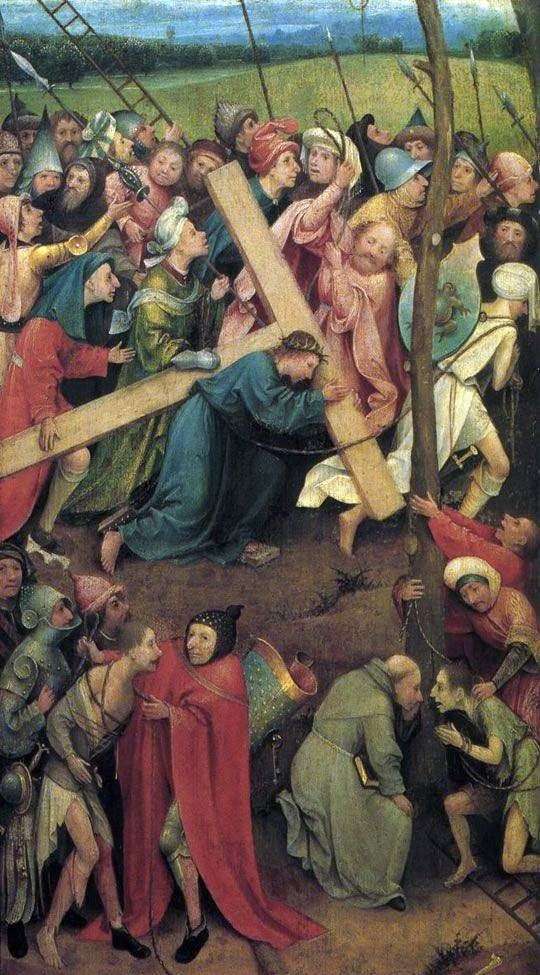 Carrying the Cross on Calvary by Hieronymus Bosch
Carrying the Cross on Calvary by Hieronymus Bosch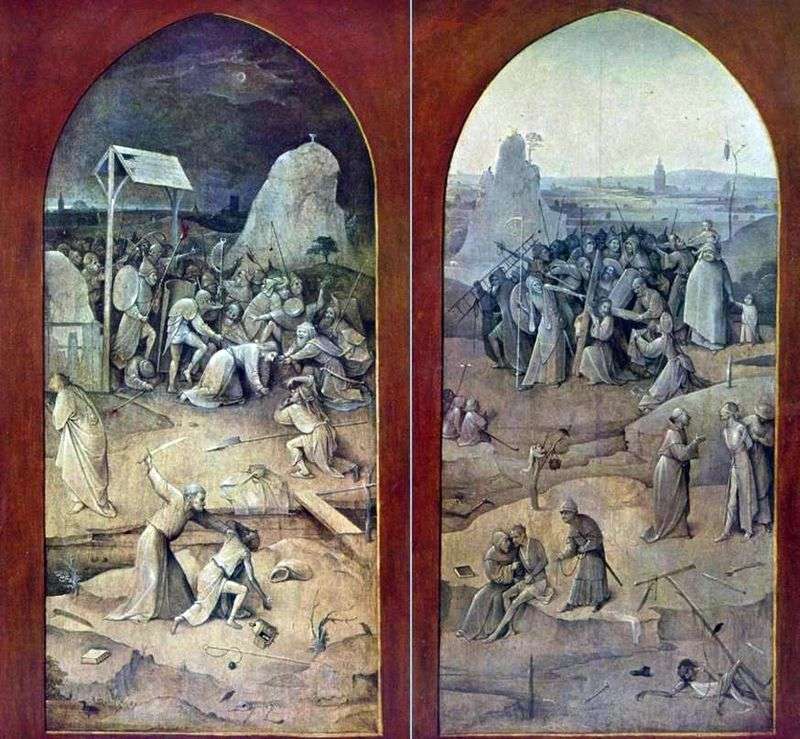 Taking in custody and Carrying the cross. The outer wings of the altar by Hieronymus Bosch
Taking in custody and Carrying the cross. The outer wings of the altar by Hieronymus Bosch The Appearance of the Virgin to the Dominican Saints by Giovanni Battista Tiepolo
The Appearance of the Virgin to the Dominican Saints by Giovanni Battista Tiepolo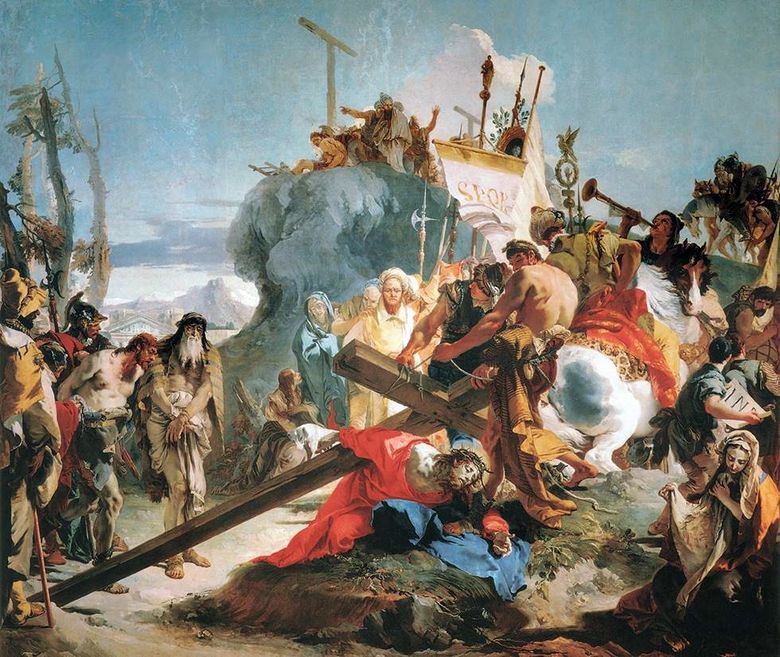 Porter la croix – Giovanni Battista Tiepolo
Porter la croix – Giovanni Battista Tiepolo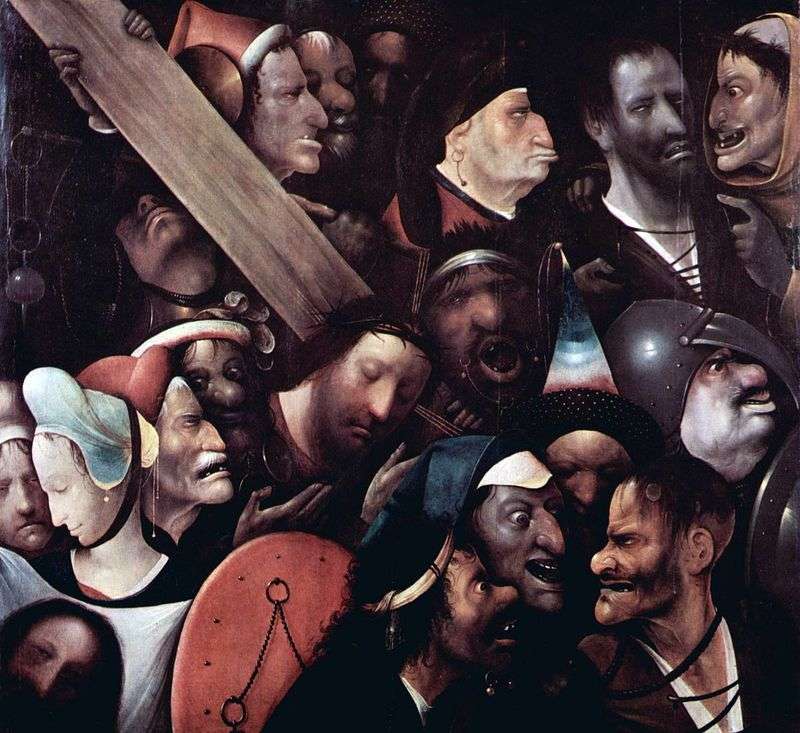 Carrying the cross by Hieronymus Bosch
Carrying the cross by Hieronymus Bosch The altar images by Giovanni Battista Tiepolo
The altar images by Giovanni Battista Tiepolo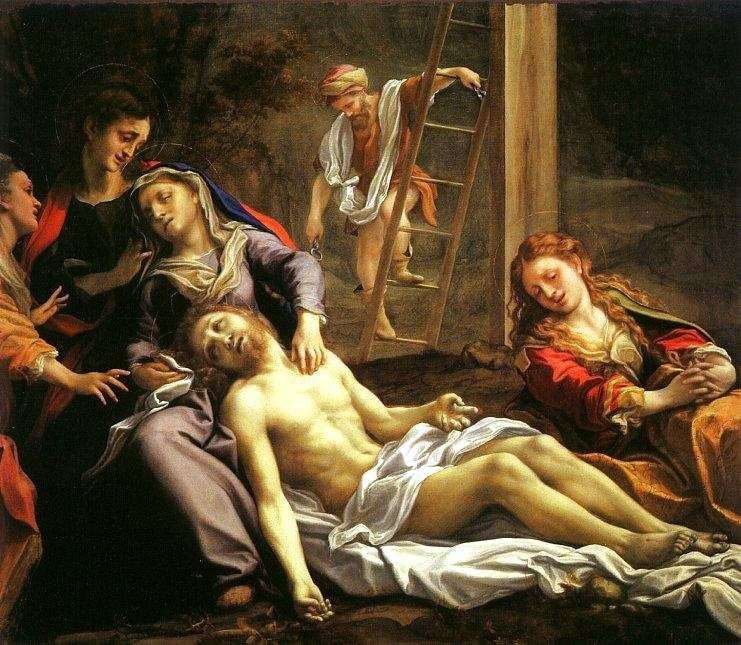 Descent from the Cross by Correggio (Antonio Allegri)
Descent from the Cross by Correggio (Antonio Allegri)